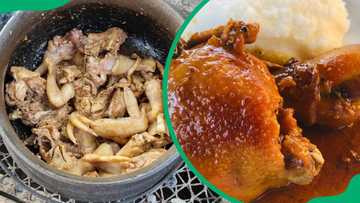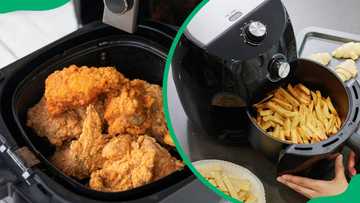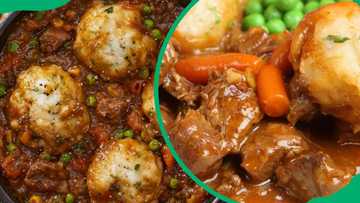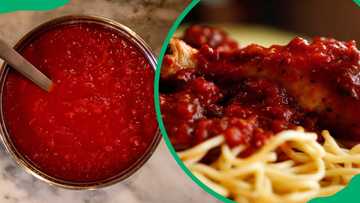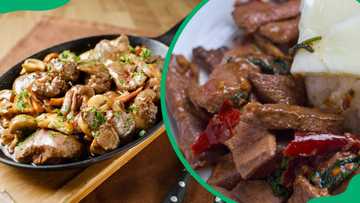Bean curry: an easy and tasty South African recipe
Beans are a nutritious delicacy in many cultures, and their inclusion in curries is a prominent culinary practice. When beans are curried, they absorb the aromatic flavours of the spices, resulting in a creamy, fragrant, and spicy dish. Various bean curry recipes are available due to the dish's versatility and adaptability in multiple cuisines.
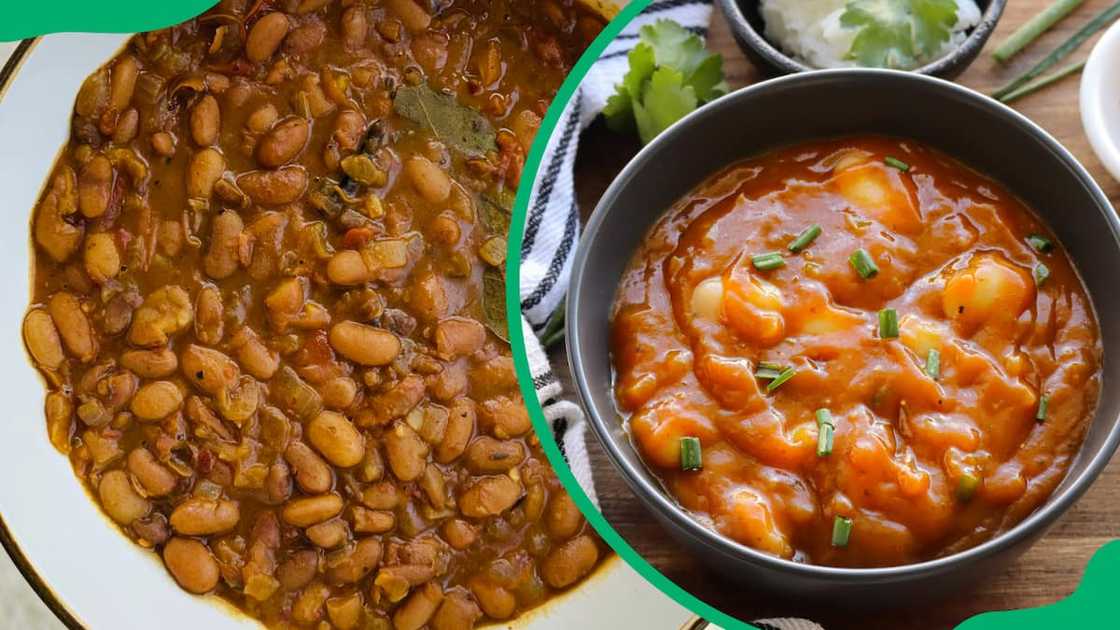
Source: UGC
TABLE OF CONTENTS
- Simple bean curry recipe South Africa
- FAQs
- What are the best beans for preparing bean curry in South Africa?
- How can you enhance the taste and texture of kidney bean curry?
- Can you use coconut milk instead of water in bean curry?
- How do you thicken bean curry?
- Can you freeze bean curry?
- How many calories are in green bean curry?
- How much protein is in bean curry?
Bean curry can be enjoyed by vegans, vegetarians, and individuals with lactose intolerance because it is dairy-free and meat-free. It is an excellent source of plant-based proteins, providing a nutritious alternative to meat-based proteins.
Simple bean curry recipe South Africa
Curried beans are a comforting addition to a nutritious diet. It can be served with rice, bread, or roti. Try the following recipe to create a delicious dish that captures the essence of the South African culinary heritage.
- Yield: 4-6 servings
- Total cooking time: 2.5-3 hours (including bean soaking and cooking time)
Ingredients
- 2 cups dried beans (such as sugar beans, red kidney beans, or black beans)
- 2 tablespoons vegetable oil
- 1 large onion, finely chopped
- 3 cloves garlic, minced
- 1 tablespoon ginger, minced
- 2 tomatoes, chopped
- 2 tablespoons curry powder
- 1 teaspoon ground cumin
- 1 teaspoon ground coriander
- 1 teaspoon turmeric powder
- Salt to taste
- Freshly ground black pepper to taste
- 2 cups vegetable broth or water
- Chopped fresh cilantro for garnish
Cooking instructions
To prepare and cook the beans;
- Rinse the dried beans under cold water and remove any debris.
- Soak the beans overnight in a large bowl of water. Alternatively, you can use the quick-soak method by bringing the beans to a boil in water and then letting them sit for 1 hour off the heat.
- After soaking, drain and rinse the beans again.
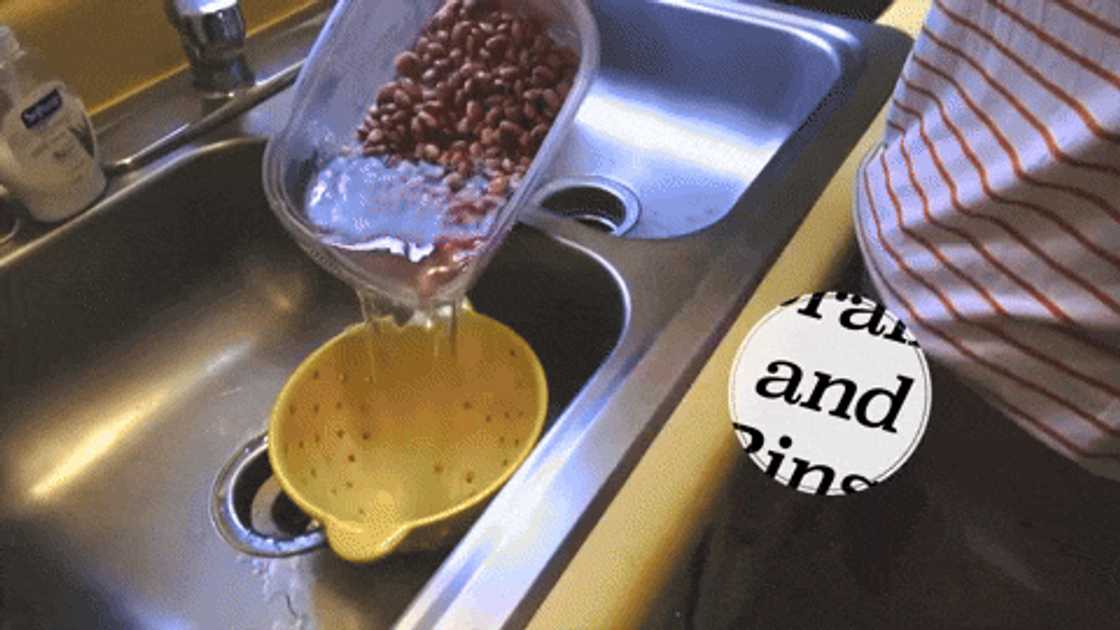
Source: UGC
- In a large pot, cover the soaked beans with water and bring to a boil.
- Reduce the heat to low, cover, and simmer until the beans are tender, about 1 to 1.5 hours, depending on the type of beans used.
- Once cooked, drain the beans and set aside.
To prepare the curry;
- Heat the vegetable oil over medium heat in a large skillet or pan.
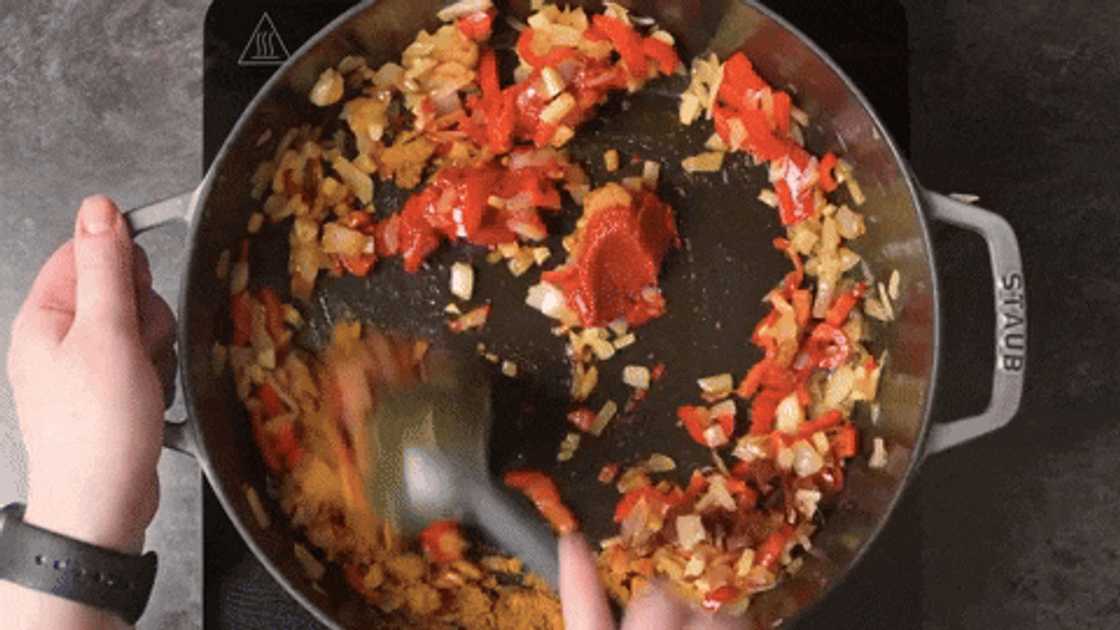
Source: UGC
- Add the chopped onion and sauté until soft and translucent, about 5 minutes.
- Stir in the minced garlic and ginger and cook for another 2 minutes until fragrant.
- Add the chopped tomatoes, curry powder, ground cumin, coriander, turmeric powder, salt, and black pepper. Cook for about 5 minutes, until the tomatoes break down and the spices are fragrant.
To combine the beans and curry;
- Add the cooked beans to the skillet and stir to coat them with the spice mixture.
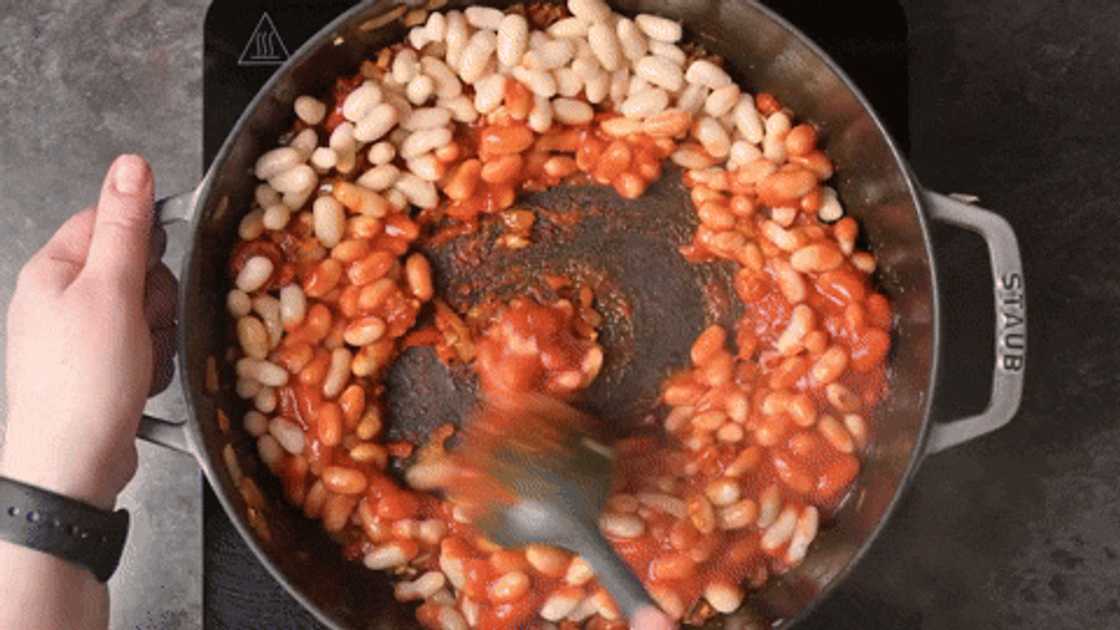
Source: UGC
- Pour in the vegetable broth or water and bring the mixture to a simmer.
- Reduce the heat to low, cover, and let the curry simmer for 20-30 minutes, occasionally stirring until the flavours are well combined and the sauce has thickened to your desired consistency.
- Taste and adjust seasoning with more salt and pepper if needed.
- Garnish the bean curry with chopped fresh cilantro and serve while still hot with rice, bread, or as bunny chow.
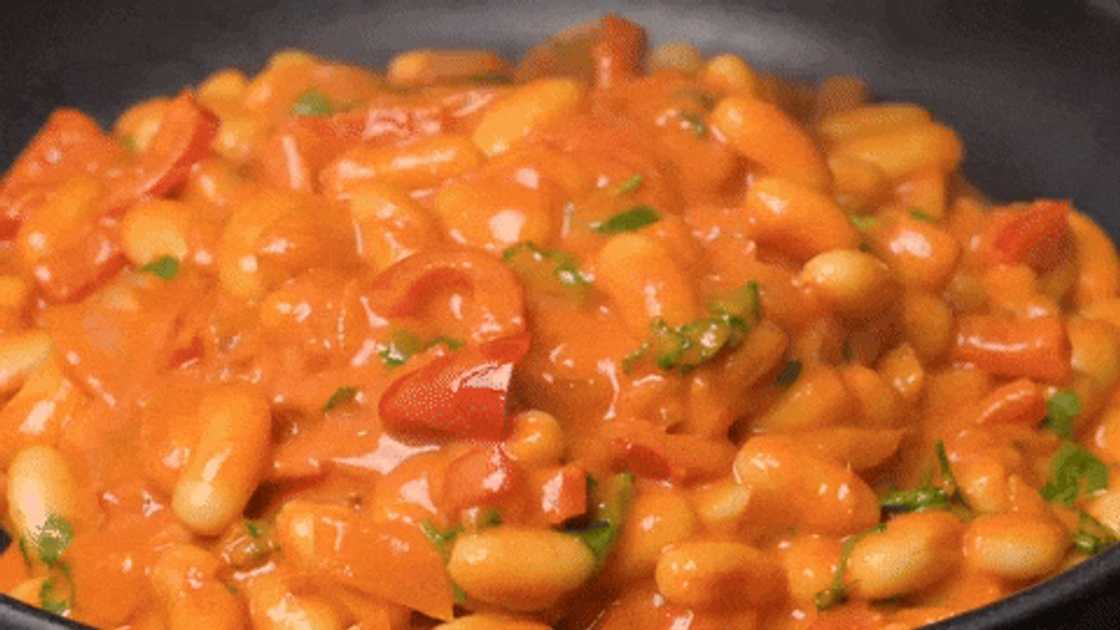
Source: UGC
FAQs
Here are some frequently asked questions about bean curry and their answers;
What are the best beans for preparing bean curry in South Africa?
Different types of beans can be used to prepare the curry, each with its unique taste and texture. Popularly used bean types include the following;
- Sugar beans (red speckled beans): They have a rich, earthy flavour and a slightly grainy texture
- Green beans (string beans): Cook them until tender before adding them to the curry.
- Red kidney beans: They have a robust flavour; they should be pre-soaked and properly cooked
- Black beans: They have a slightly sweet flavour with a firm texture and are rich in dietary fibre.
- Cannellini beans (white kidney beans): They have a creamy, tender texture with a mild nutty flavour when cooked.
How can you enhance the taste and texture of kidney bean curry?
Enhancing the taste of kidney bean curry involves incorporating several simple yet effective techniques. Try these tips;
- Using a combination of aromatic spices enhances the natural earthiness of kidney beans.
- Add tomatoes and fresh vegetables like spinach, grated carrots, and bell peppers to enhance texture and balance the dish's richness.
- Garnish with fresh herbs like coriander leaves to complement the spices.
- Cook the beans to perfection, being careful not to overcook. Overcooked kidney beans can become musty, affecting the dish's taste and texture.
- If using canned beans, rinse them thoroughly before adding them to the curry to remove excess salt and starch.
Can you use coconut milk instead of water in bean curry?
Coconut milk can be a delightful alternative to water in bean curry. It adds a rich, creamy texture with a hint of tropical flavour, complementing the spices and ingredients added to the dish. Coconut milk gives the curry a slightly sweeter and nuttier taste compared to using water.
How do you thicken bean curry?
You can thicken bean curry using various techniques, including the following;
- Allowing the dish to simmer uncovered for an extended period. This ensures the liquid evaporates, naturally thickening the curry.
- Using a thickening agent like flour, cornstarch, or tomato paste
- Puree some of the beans using a blender or food processor, then stir the puree back into the curry to thicken the dish and add creaminess.
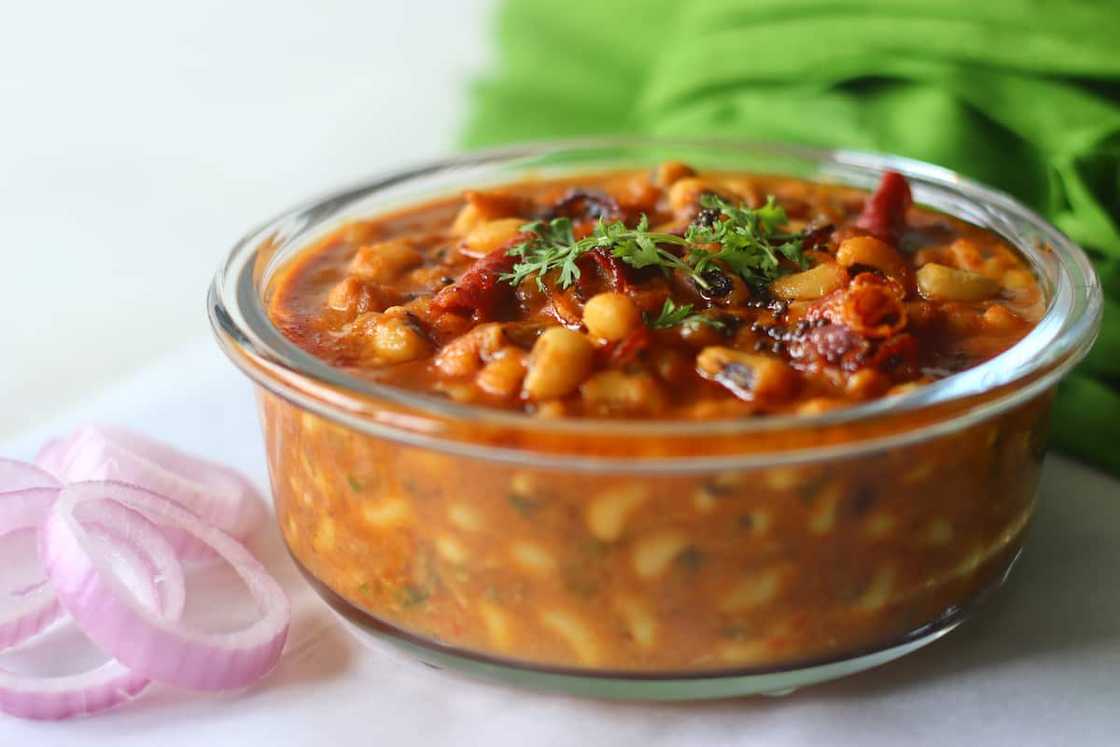
Source: Getty Images
Can you freeze bean curry?
You can freeze bean curry by following these simple steps;
- Allow the curry to cool completely to prevent ice crystals from forming inside the container and to maintain the curry quality.
- Transfer the cooled dish into freezer-safe containers or resealable freezer bags.
- Label the container and add the date it was prepared before placing it in the freezer.
- When ready to eat, transfer to the refrigerator overnight to thaw the frozen curry. Reheat the thawed curry on the stovetop or in the microwave until heated through. Adjust the seasonings, if necessary, before serving.
How many calories are in green bean curry?
The total calories vary with the specific ingredients and proportions used. 240 grams (about 1 cup) of green curry contains 100-150 calories, including calories from the added ingredients.
For a more accurate estimate, you can use a nutritional calculator. Food packages meeting quality standards usually have visible nutritional information and incorporated ingredients on the packaging.
How much protein is in bean curry?
The total protein in bean curry varies with the type and quantity of beans used and the ingredients added. 240 grams contains 7-15 grams of proteins. For accurate nutritional value, you can consult a certified dietitian.
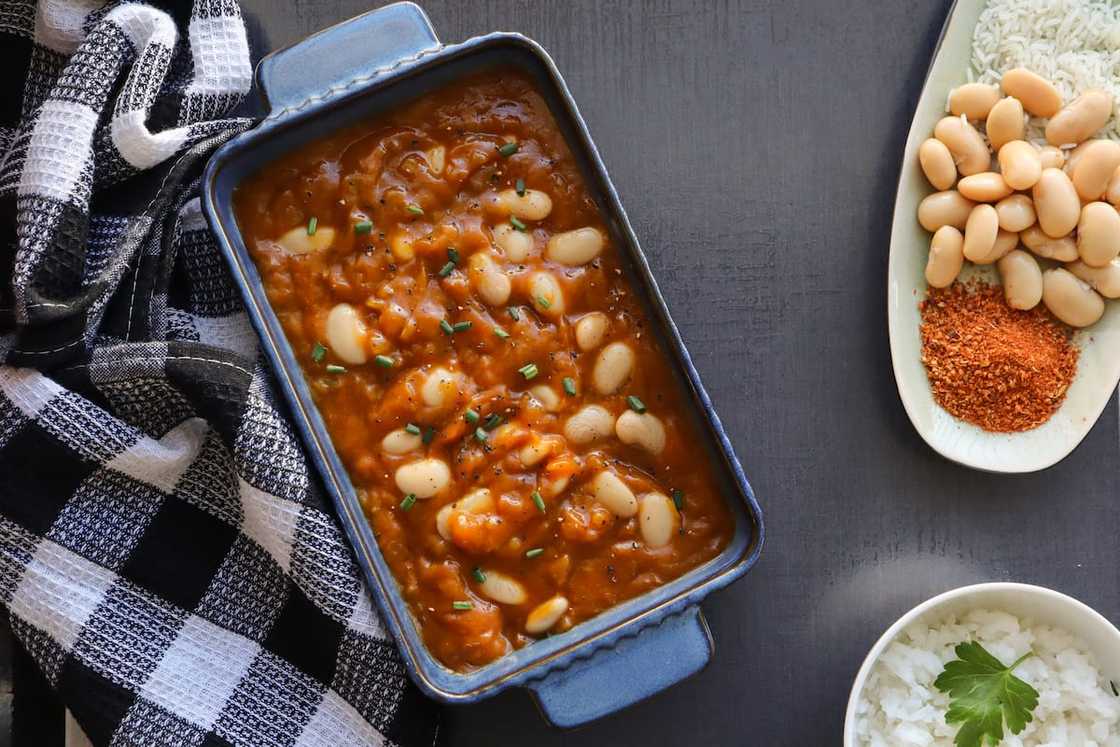
Source: Getty Images
The above bean curry recipe is easy to follow and can be prepared by anyone. The dish is a healthy option for those looking to incorporate more plant-based but delicious meals into their diet. Bon appétit!
READ ALSO: Pork trotters: A delicious recipe to cook them in 5 easy steps
Briefly.co.za shared a simple recipe for preparing delightful pork trotters (pig feet). The meat cut is rich in collagen and often features in traditional nose-to-tail dishes.
Pork trotters are prepared using simple and readily available ingredients and spices. The meat cut is cheaper than other pork cuts and should be slow-cooked to allow it to absorb and hold onto flavours.
Source: Briefly News

